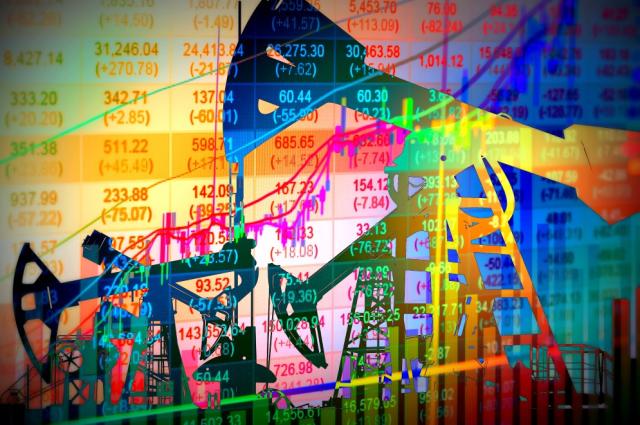
Raymond James said investor skepticism remained high as to whether the energy sector could “truly change its stripes.” (Source: Shutterstock.com)
[Editor's note: A version of this story appears in the April 2019 edition of Oil and Gas Investor. Subscribe to the magazine here.]
There’s no question that the vast majority of E&Ps now understand they have a mandate to prioritize returns to investors over growth. The problem is that the fine print detailing precise proportions—what level of returns is the right balance for a certain rate of growth—has been arriving slow. As one analyst said, “The key question is: What will investors reward?”
The uneven response by investors to certain fourth-quarter earning results would indicate that the ideal recipe is still in the making. Take Concho Resources Inc. for example. In announcing an admittedly weak final quarter, Concho cut its 2019 capex outlook by 17%, while lowering oil production by only 7% below prior guidance. Annual oil growth in 2019 was moderated at 26% to 30% from 35% to 40% earlier.
In a “show me the money” market, Concho’s stock fell roughly 14.3% over the next two days, even as it projected generating close to $1 billion in free cash flow at $60 per barrel in 2020. Analysts attributed the fall to management’s reticence to specify how it planned to use the free cash flow. In addition, other things equal, the tempered growth meant the stock traded at a more expensive multiple.
At Hart Energy’s recent Energy Capital Conference, VanEck Associates portfolio manager Shawn Reynolds countered the view that a slowdown in growth should necessarily result in a lower E&P multiple. Rather, the tempered trajectory can translate into stronger visibility, higher returns and a greater ability to pass on a portion of returns to shareholders.
FULL VIDEO - Energy Capital Conference 2019: From High-Yield to Low Equity — How Public Investors View Your Returns
For example, if an E&P can grow at 10% per year for 10 years and generate total shareholder returns in the high single digits, it should earn a greater multiple of enterprise value to EBITDA than the market’s current 5.5 to six times, he said. “We haven’t proved it yet. But we’re on the cusp of giving the market something it hasn’t seen before. It should trade at a much higher multiple.”
To address efforts to strike the best balance between growth and free cash flow, Raymond James has developed a methodology to screen for E&Ps that can “efficiently grow reserves and production while spending within cash flow.” It then takes the analysis “a step further to identify the optimal production growth and free-cash-flow combination for each operator,” it said.
The base for the new Raymond James analysis is the time-tested recycle ratio, which compares an E&P’s operating cash flow to its proved developed finding and development costs. The recycle ratio is then adapted to incorporate several changes.
First, the analysis considers reserves produced only in the current year—typically 20% to 25% of the well reserves—in its calculations. Next, the adjusted recycle ratio is scaled so cash generated from current production “only needs to cover newly added barrels in order for an operator to achieve breakeven cash flow in the current year.” These modifications enable the analysis to “effectively identify whether an operator is able to add first year reserves within cash flow.”
The Raymond James found that a group of E&Ps, with a compound annual growth rate (CAGR) in production of 10% or more at strip pricing, can generate a free-cash-flow yield in 2025 of 10% or more. The group is made up of Continental Resources Inc., Concho Resources, EOG Resources Inc., Diamondback Energy Inc., Oasis Petroleum Inc., Parsley Energy Inc., Pioneer Natural Resources Co. and Whiting Petroleum Corp. (Excluded from the study were E&Ps with significant non-U.S. operations, such as Noble Energy Inc.)
Despite deep skepticism that the energy sector can compete with the broader market, the Raymond James study also indicated that, assuming $55 per barrel, its E&P coverage could grow production at a 15% CAGR over 2019 to 2025 to optimize a free-cash-flow-yield of about 12.5%. This compares to the S&P 500 average growth rate of about 7% and a free-cash-flow-yield of about 6%.
Raymond James said investor skepticism remained high as to whether the energy sector could “truly change its stripes.” While the industry has “shifted its focus to corporate level returns/free cash flow,” and balance sheets “have never been better,” it said, “sentiment is as bad as it’s ever been.”
Meanwhile, the meager multiples for E&Ps may re-awaken the long-dormant M&A market, according to a Tudor, Pickering, Holt & Co. report. With a 2.5 turn valuation gap between large-cap E&Ps trading at 5.4 times enterprise value-to-debt-adjusted cash flow (EV-to-DACF) and mid-cap E&Ps trading at 3.9 times EV-to-DACF, “the case continues to grow for a very active M&A environment in 2019.”
Chris Sheehan can be reached at csheehan@hartenergy.com.
Recommended Reading
BP’s Kate Thomson Promoted to CFO, Joins Board
2024-02-05 - Before becoming BP’s interim CFO in September 2023, Kate Thomson served as senior vice president of finance for production and operations.
Magnolia Oil & Gas Hikes Quarterly Cash Dividend by 13%
2024-02-05 - Magnolia’s dividend will rise 13% to $0.13 per share, the company said.
TPG Adds Lebovitz as Head of Infrastructure for Climate Investing Platform
2024-02-07 - TPG Rise Climate was launched in 2021 to make investments across asset classes in climate solutions globally.
HighPeak Energy Authorizes First Share Buyback Since Founding
2024-02-06 - Along with a $75 million share repurchase program, Midland Basin operator HighPeak Energy’s board also increased its quarterly dividend.
Occidental Increases Annual Dividend by 22%
2024-02-11 - Occidental Petroleum Corp.’s newly declared dividend is at an annual rate of $0.88 per share, compared to the previous annual rate of $0.72 per share.





